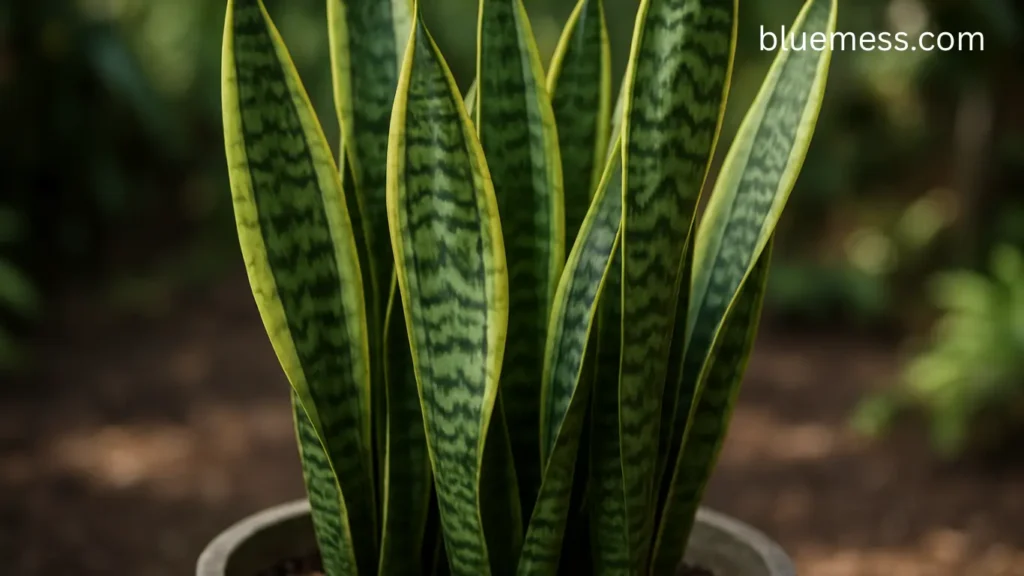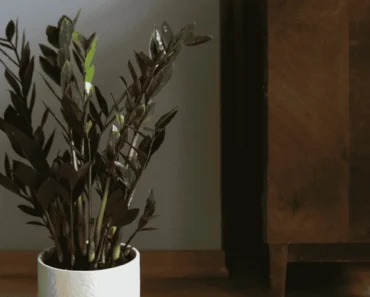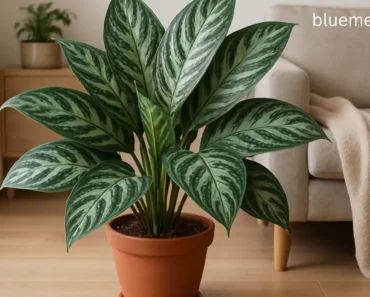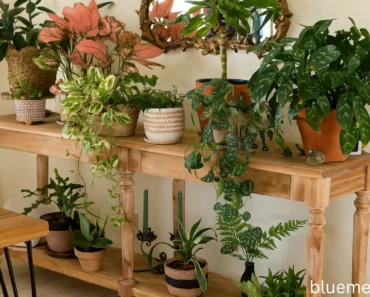
Table of Contents
How to Care for Snake Plants in Low Light
Hey There, Future Snake Plant Parent!
Okay, let’s talk about Snake Plants – basically the golden retrievers of the plant world, except they don’t need walks and they’re totally cool if you forget about them for weeks. Seriously, these bad boys have stolen the hearts of plant people everywhere, and once you hear why, you’ll probably want one too (or five… no judgment).
Picture this: a plant with these super cool sword-like leaves that shoot straight up like they’re reaching for the stars. They look fancy enough to impress your friends but are literally harder to kill than a Nokia phone from 2003. Plus – and this is the kicker – they actually clean your air while looking gorgeous. It’s like having a really attractive roommate who also does chores!
So whether you’re stuck with that cave-like office cubicle, living in a basement apartment that gets about as much sun as a vampire, or just want to shove a plant in that dark corner behind your TV, I’ve got you covered. This guide’s gonna show you how to keep your Snake Plant not just alive (which is honestly pretty easy) but actually thriving. Ready? Let’s dive in!
Getting to Know Your New Green Buddy
Alright, so Snake Plants go by a few names. The science folks call them Dracaena trifasciata (used to be Sansevieria trifasciata, but apparently the plant scientists had a meeting and changed it – who knew plants could get rebranded?). My grandma calls them Mother-in-Law’s Tongue, which… well, let’s not unpack that family dynamic right now.
Where These Tough Cookies Come From
These plants originally come from West Africa, where it’s basically hot, dry, and rocky – think desert vibes but in Africa. This explains SO much about why they’re practically indestructible. They evolved in a place where water is like finding a $20 bill in your old jeans – rare and precious. Their thick leaves are basically water bottles, storing moisture for the hard times. And get this – they even breathe differently than other plants, opening their pores at night instead of during the day. Smart little things!
The Snake Plant Family Tree (All the Cool Kids)
Snake Plants are like potato chips – you can’t have just one variety. They come in all sizes, from tiny 6-inch desk buddies to absolute units that can hit 9 feet tall (yes, really!). The best part? They grow slower than your motivation on a Monday morning, so they won’t suddenly take over your apartment.
Here’s the lineup of the most popular ones:
- ‘Laurentii‘: The classic. Dark green with yellow edges. It’s like the vanilla ice cream of Snake Plants – everyone likes it.
- ‘Zeylanica’: This one’s got these cool patterns that look like someone went wild with a paintbrush.
- ‘Moonshine’: My personal favorite! Silvery-green leaves that literally look like they’re glowing. It’s giving mystical forest vibes.
- ‘Cylindrica’: The weird cousin with round, stick-like leaves. Sometimes people braid them, which is either super cool or trying too hard, depending on your style.
- ‘Shark Fin’: Yep, it looks exactly like what you think. Nature’s got a sense of humor!
The Real Deal on Snake Plant Care (Spoiler: It’s Stupid Easy)
Let There Be Light… Or Not, Whatever
Here’s where Snake Plants really shine (pun intended). Sure, they’d love to sit in bright, indirect light where they’ll grow faster and show off their colors better. But honestly? They’re totally fine being that plant in the corner where the sun don’t shine.
I’ve got one in my bathroom that gets about as much natural light as a cave, and it’s still alive after two years. The catch? In low light, they grow suuuper slow and might lose some of their fancy patterns. Think of it like this: in good light, they’re living their best life. In low light, they’re just vibing, doing the bare minimum – relatable, right?
Whatever you do, don’t stick them in direct sun thinking you’re doing them a favor. That’s like taking someone who’s been binge-watching Netflix for a week and dropping them in the Sahara. Not cool. Their leaves will literally get sunburned (yes, plants can get sunburned!).
Signs your lighting situation needs work:
- Plant’s growing about as fast as your savings account? Needs more light.
- Leaves doing the lean like they’re in a Michael Jackson video? They’re reaching for light.
- Turning yellow or brown? Could be too much OR too little light. Plants are dramatic like that.
Pro tip for low-light spots: Just rotate your plant every few weeks so it doesn’t get all lopsided. And if your place is darker than a Tim Burton movie, maybe grab a cheap grow light. Your plant will thank you.
Watering: Less Is More (Like, Way More)
Okay, this is where most people mess up. Remember how I said these plants are from the desert? Yeah, they’re not into the whole “moist soil” thing. The number one rule of Snake Plant Club: Let. It. Dry. Out.
I water mine maybe once a month in summer, and in winter? Pfft, maybe every 6-8 weeks. My record is forgetting for 3 months, and the plant was literally fine. Try that with a fiddle leaf fig and you’ll have a very expensive stick.
Here’s my super scientific watering test: Stick your finger in the soil. Dry? Good, wait another week. Still dry? Okay, now you can water. When you do water, give it a good drink until water comes out the bottom, then leave it alone like that ex who keeps texting you at 2 AM.
The fastest way to murder a Snake Plant? Overwatering. It’ll get root rot faster than you can say “But I was just trying to help!” And please, for the love of all that is holy, don’t let water sit in the middle where the leaves meet. That’s asking for trouble.
Dirt Talk (The Soil Situation)
Your Snake Plant wants soil that drains faster than your phone battery. Get yourself some cactus mix, or if you’re feeling fancy, make your own with regular potting soil, sand, and perlite (those little white balls that look like tiny Styrofoam).
And listen, drainage holes in your pot aren’t optional – they’re mandatory. No drainage holes is like wearing plastic bags as shoes. Sure, it might work for a minute, but it’s gonna end badly.
Here’s something cool: Snake Plants actually like being a bit cramped in their pots. They’re introverts! Don’t repot them every year like those needy plants. Every 2-3 years is fine, and if it’s in low light? Girl, you might not need to repot for like 5-10 years. When you do, just go up one pot size. They’re not trying to live in a mansion.
Temperature and Humidity (AKA Room Vibes)
Good news! If you’re comfortable, your Snake Plant’s comfortable. They like it between 60-85°F, which is basically normal room temperature. They hate drafts though, so don’t stick them right next to your AC or heater. That’s just mean.
And here’s where I’m gonna save you from a common mistake: DO NOT MIST YOUR SNAKE PLANT. I don’t care what that influencer on Instagram said. Snake Plants hate being misted more than cats hate baths. It can cause rot and fungus, and nobody wants a funky fungus situation. The only time you should get water near those leaves is when you’re wiping off dust (which you should do occasionally so they can photosynthesize properly and look spiffy).
Leveling Up Your Snake Plant Game
Food for Thought (Fertilizing)
Real talk? Snake Plants are like that friend who’s happy with gas station coffee – they don’t need much. You can fertilize them during spring and summer if you want, but use half-strength fertilizer and only once a month. In fall and winter? Nah, they’re hibernating. Let them be.
I honestly forget to fertilize mine half the time and they’re still thriving. Over-fertilizing is way worse than under-fertilizing. It’s like force-feeding someone vitamins – more isn’t always better!
Grooming Your Green Friend
Every now and then, you might need to play plant stylist. Got a dead or ugly leaf? Snip it off at the base with clean scissors. It’s like giving your plant a haircut. And wipe those leaves down monthly-ish to get rid of dust. Think of it as giving your plant a spa day.
Making Baby Snake Plants (It’s So Easy!)
Want more Snake Plants? Of course you do! They’re stupid easy to propagate. You’ve got two options:
The Division Method: Like separating conjoined twins, but less dramatic. Pull the plant out, wiggle the roots apart into sections, and boom – multiple plants!
The Leaf Cutting Method: Cut a healthy leaf into 3-4 inch pieces (mark which end was up – yes, it matters). Stick the bottom end in soil or water. Wait 4-6 weeks while magic happens. New plants will grow! It’s like plant magic, except it’s just science.
When Things Go Wrong (Troubleshooting Time)
Even the chillest plants have bad days. Here’s your diagnosis guide:
Yellow, mushy leaves? You’re loving it to death with too much water. Stop it. Let it dry out completely.
Crispy, wrinkled leaves? Too much sun, friend. Move it somewhere less bright.
Skinny leaves doing the lean? It needs more light. It’s literally reaching for it.
Brown tips? Could be tap water (they’re bougie about fluoride) or super dry air. Try filtered water if you’re feeling fancy.
Bugs? Rare, but happens. Dab them with rubbing alcohol on a cotton swab. It’s like pest control assassination.
The Cool Extras Nobody Tells You
Heads Up for Pet Parents
If you’ve got fur babies, keep these plants up high. They’re not super toxic, but they’ll make your pet puke if they decide to take a nibble. Not fun for anyone involved.
They’re Basically Air Purifiers
NASA (yes, the space people) says Snake Plants clean your air. They remove nasty stuff like formaldehyde and benzene. Plus – and this is wild – they release oxygen at night instead of during the day like most plants. Perfect bedroom plant! It’s like having a very quiet, green roommate who improves your air quality.
The Mysterious Flowers
Sometimes, if you’re really lucky (or if you’ve stressed your plant just right), it might bloom! Little white flowers that smell amazing. It’s like finding a shiny Pokémon – rare but super cool when it happens.
Your Burning Questions Answered
“How often do I water this thing in my dark office?” Like, every month or two. When in doubt, don’t water. These plants are camels, not fish.
“Why’s my office plant turning yellow?” You’re probably watering it too much. That coffee-break watering routine? Stop it.
“Can it survive with just office lights?” Totally! Just keep it within a few feet of the lights. It won’t win any growth races, but it’ll live.
“What about winter?” Water even less. Like, forget-about-it less. Maybe every 6-8 weeks if you remember.
The Bottom Line
Look, if you want a plant that looks good, cleans your air, and won’t guilt-trip you when you forget about it for weeks, Snake Plants are your jam. They’re basically the perfect starter plant for anyone who’s ever killed a succulent (we’ve all been there).
Just remember the golden rules: barely water it, don’t put it in blazing sun, and leave it alone. It’s literally a plant that thrives on neglect. In a world where everything needs constant attention, isn’t it nice to have something that’s just… chill?
So go ahead, get yourself a Snake Plant. Name it something fun (mine’s called Severus Snake). Put it in that dark corner. Forget to water it. It’ll still love you. And honestly? We all need that kind of unconditional support in our lives.
Happy plant parenting, you wonderful plant person, you! 🌱
Author
George Wine is a seasoned gardening expert with over 20 years of experience in the field of horticulture. His passion for plants and nature has driven his career, where he has honed his skills in various aspects of gardening, from landscape design to plant care. George holds a Master of Science in Horticulture from the University of California, Davis (UC Davis), a prestigious institution known for its research and advancements in plant science.
Throughout his career, George has worked with a diverse range of clients, offering tailored solutions to enhance outdoor spaces and create thriving gardens. His knowledge and expertise allow him to provide invaluable advice, ensuring that both novice and experienced gardeners achieve their gardening goals. Whether you’re looking for tips on sustainable gardening practices, innovative design ideas, or advice on specific plant species, George is here to help you cultivate the garden of your dreams.






